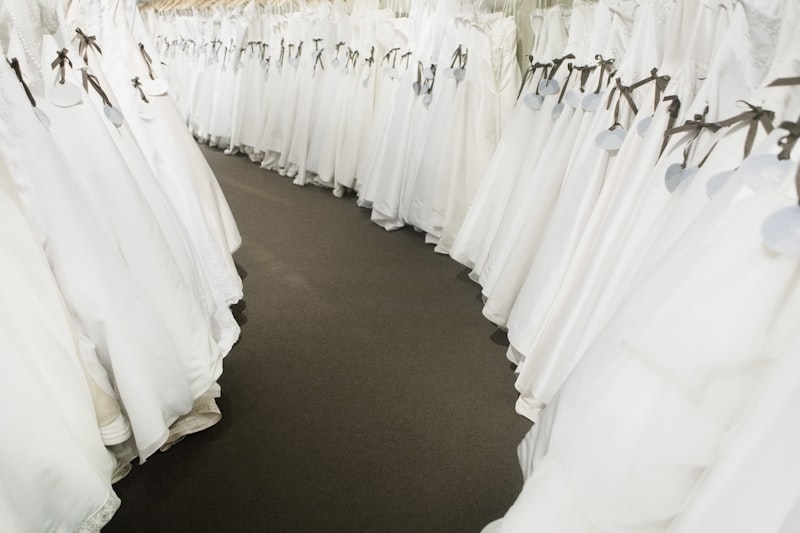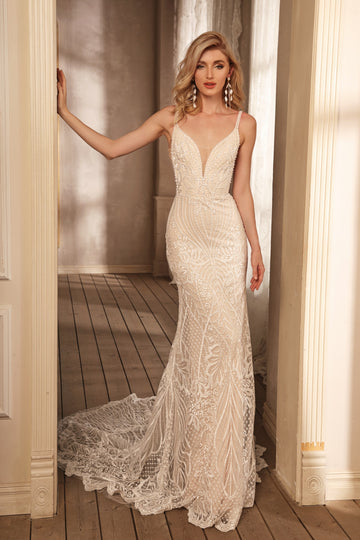Exploring the Marvelous World of Fabrics and Materials in Bridal Couture
Exploring the Marvelous World of Fabrics and Materials in Bridal Couture
When it comes to bridal couture, the choice of fabrics and materials is pivotal in creating the perfect wedding gown. The interplay of texture, weight, and sheen goes beyond mere aesthetics; it encapsulates the bride’s personality and the theme of the wedding. In this article, we will thoroughly explore the various fabrics and materials used in bridal couture, delving into their characteristics, benefits, and ideal applications, while also addressing common questions brides-to-be might have. Let’s embark on this enchanting journey to discover the elements that make up stunning bridal fashion.
The Significance of Fabric Choice in Bridal Couture
The fabric is often the first thing that catches the eye in bridal couture. It defines the overall silhouette, influences the drape of the gown, and contributes to the dress's comfort and movement. Each fabric has its unique qualities, making it crucial for brides to choose one that complements their style and the formality of their wedding.
Key Fabrics in Bridal Couture
Here is a breakdown of the most common fabrics used in bridal couture and their characteristics:
| Fabric Type | Characteristics | Best For |
| Satin | Luxurious, smooth, shiny finish, heavier weight | Formal gowns, structured designs |
| chiffon | Lightweight, sheer, soft drape, ethereal feel | Layering, flowing silhouettes |
| lace | Intricate, delicate patterns, can be heavy or light | Vintage styles, intricate detailing |
| tulle | Lightweight, netting, adds volume | Ball gowns, layering skirts |
| organza | Similar to tulle but crisper, rigid structure | Structured gowns, overlays |
| silk | Natural fiber, luxurious sheen, breathability | High-end couture, tailored designs |
Exploring Materials Beyond Fabrics
In addition to fabrics, various materials contribute to the overall elegance and detail of bridal gowns. These include embellishments, linings, and underlays. Understanding how these elements work together can help brides make informed choices.
Common Additional Materials
Brides can enhance their gown with several additional materials, each adding a unique touch of elegance:
- Beading and Embellishments: These decorative elements can range from simple sequins to elaborate crystal work, providing sparkle and sophistication.
- Lining: A quality lining ensures comfort and prevents transparency, especially in sheer fabrics. Commonly used materials include silk, cotton, and polyester blends.
- Crinoline: Often used under ball gowns, crinoline provides volume and structure, allowing the skirt to hold its shape.
- Boning: Integrated into the bodice, boning provides support and structure, ensuring a flattering fit.

Choosing the Right Fabric for Your Wedding Theme
Your choice of fabric should align with your overall wedding theme and personal style. For example, a rustic outdoor wedding might be complemented by flowing chiffon or lace, while a formal ballroom wedding could call for luxurious satin and silk. Understanding how materials communicate with the environment and theme will help narrow down your choices.
Additionally, consider the season when making your fabric choices. Lighter fabrics such as chiffon or tulle are optimal for warmer months, whereas heavier materials like satin or silk might be ideal for winter weddings. Your comfort is just as important as the aesthetic appeal of the gown, and choosing the right fabric can significantly impact that.
FAQs on Fabrics and Materials in Bridal Couture
As you make your selections, you may have several questions regarding fabrics and their uses. Here are the most frequently asked questions:
1. What is the most comfortable fabric for a wedding gown?
Comfort is subjective, but many brides find silk and cotton blends to be both breathable and comfortable. Satin can also be comfortable if lined properly.
2. How do I maintain and clean my wedding gown after the wedding?
Always refer to the manufacturer's care instructions. Generally, professional cleaning is recommended, especially for delicate fabrics like lace and silk.
3. Can I customize the fabric of a designer gown?
Many designers offer customization options, allowing brides to choose fabrics that resonate with their personal style. Always communicate your preferences with the boutique or designer.
Final Thoughts on Fabrics and Materials in Bridal Couture
Choosing the right fabrics and materials for your bridal couture is an exciting yet critical aspect of wedding planning. It enables you to personalize your gown, reflect your unique style, and feel beautiful on one of the most significant days of your life. Remember to consider the gown's silhouette, the theme of your wedding, and above all, your comfort when selecting fabrics. Seeking assistance from experienced bridal consultants can also provide valuable insights into the best options for your vision. Embrace the journey of creating the dress of your dreams!
As you venture forward in your bridal gown selection, keep in mind that fabric choice is not merely about fashion; it’s about the emotional connection you build with your wedding attire. Happy gown shopping!
